THE HEBRON MASSACRE IN PICTURES
by Lenny Ben-David
These photographs are from the Library of Congress collection. The first photograph — our title page — is a view of Jerusalem and was taken between 1860 and 1880 by Frank M. Good, according to the Library. But we can narrow down the dates a little further. The photo shows the Churva Synagogue dome on the left horizon between the two mosques' domes. The Churva was finished in 1864.
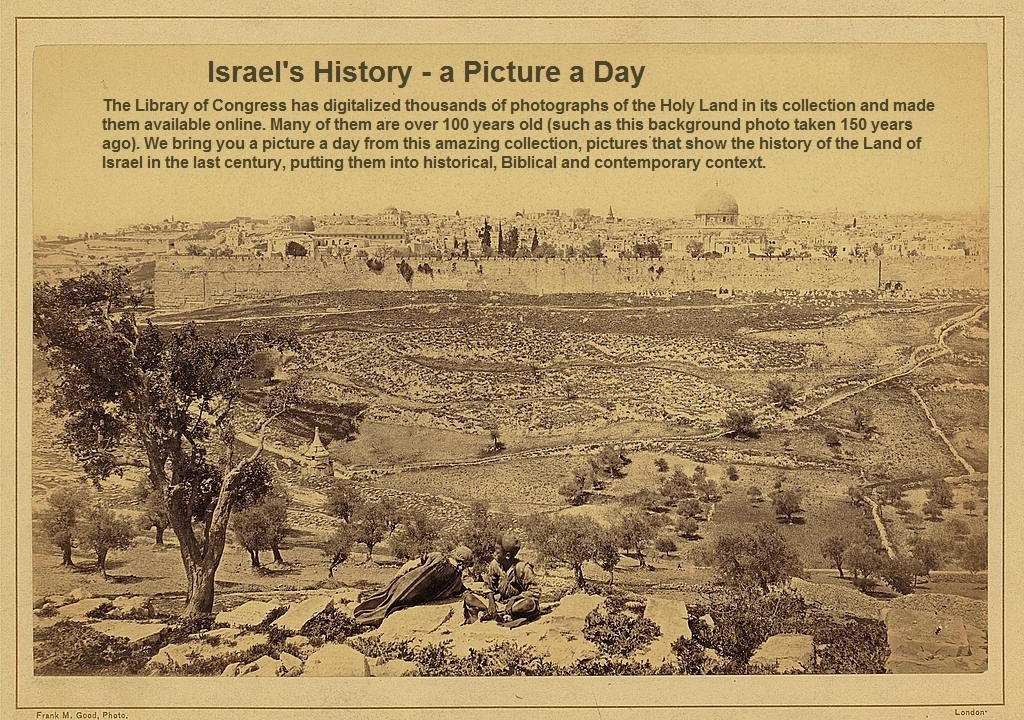
Most of the Library of Congress pictures are from photographers from the "American Colony" in Jerusalem, a group of Christian utopians — often eccentric — who lived in Jerusalem between 1881 and the 1940s. They returned to the U.S. and bequeathed their massive collection to the Library of Congress in 1978. The photos were digitalized in recent years.
A history of the American Colony Photography Department can be found in Jerusalem's American Colony and Its Photographic Legacy by Tom Powers and in an Institute for Palestine Studies article, Western Consumption and "Insider" Commercial Photography. Unfortunately, the latter article pays little attention to the photographs of Jews and Jewish sites.
The rest of this article is devoted to photographs from the Library of Congress collection on the massacre of Hebron.
On the eve of the anniversary of the Hebron massacre on August 24, Israel Daily Picture is re-posting these photographs which we uncovered in the American Colony collection in the Library of Congress archives.
Today's leaders of the Hebron Jewish community told us last year that they had never seen the photos before.
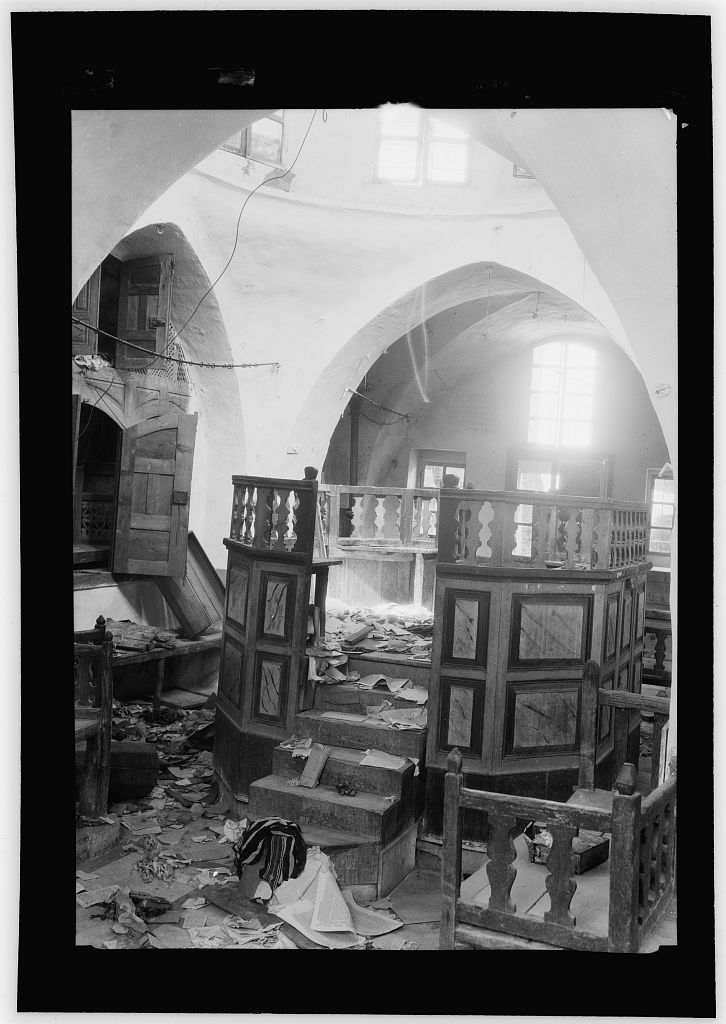
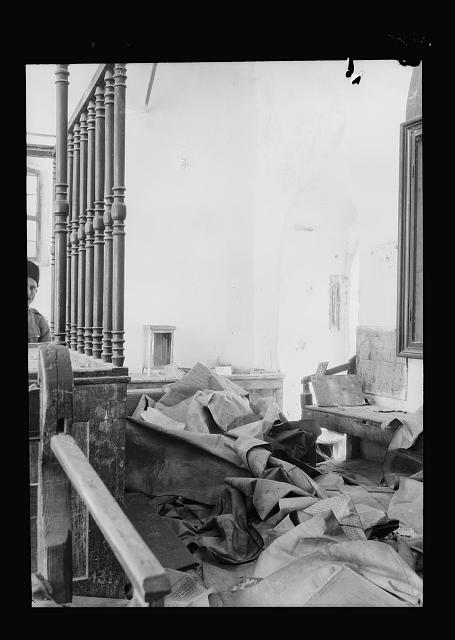
Background to the Hebron massacre. After the British army captured Palestine from the Turks in late 1917, the relationship between the British and the local Arab population was characterized by tension that sporadically erupted into insurrection over the next 30 years. A destroyed synagogue. Torah scrolls strewn on the ground
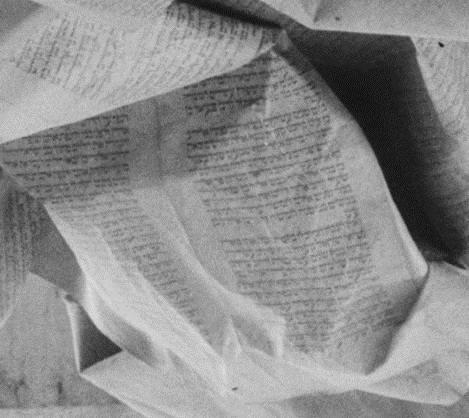
The Arabs of Palestine were led by the powerful Husseini clan who controlled the offices of the Mufti (religious leader) as well as the Mayor of Jerusalem. For decades the clan had opposed European colonialism, the growing power of foreign consulates in Jerusalem, Christian and Jewish immigration and land purchases. After the 1917 Balfour Declaration expressed support for "a national home for the Jewish people," Husseini added "Zionists" to his enemies list. The clan leveraged its power and threats of violence to win over Turkish and British overlords, to challenge the Hashemite King Abdullah, and to hold off competing clans such as the Nashashibi, Abu Ghosh, and Khalidi clans.
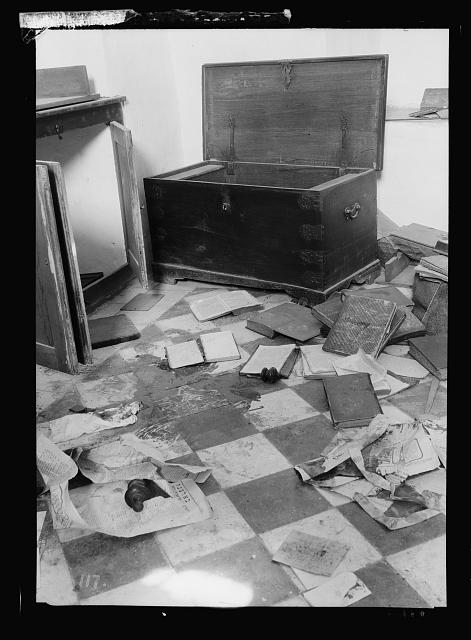
[Haj Amin el Husseini fled Palestine in 1937 to escape British jail and eventually found his way to Berlin where he assisted the Nazi war effort. He died of natural causes in Beirut in 1974.]
On Yom Kippur 1928, Jews brought chairs and screens to prayers at the Western Wall. This purported change of the status quo was exploited by the Mufti, Haj Amin el Husseini, to launch a jihad against the Jews. Husseini's campaign continued and escalated after a Jewish demonstration at the Kotel on Tisha B'Av in August 1929. Rumors spread that Jews had attacked Jerusalem mosques and massacred Muslims. The fuse was lit for a major explosion.
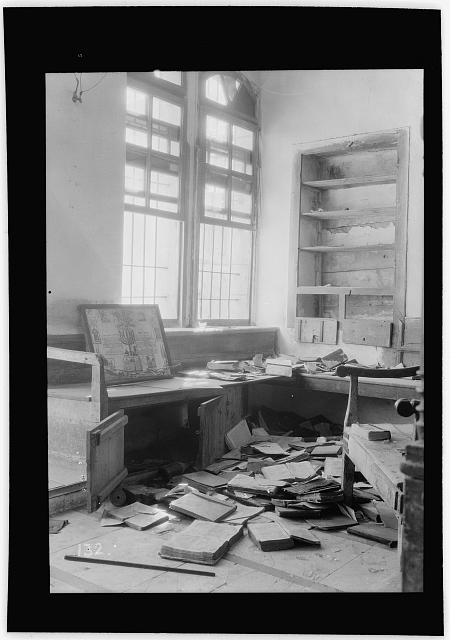
Starting on Friday, August 23, 1929 and lasting for a week, attacks by enraged Arab mobs were launched against Jews in the Old City in Jerusalem, in Jerusalem suburbs Sanhedria, Motza, Bayit Vegan, Ramat Rachel, in outlying Jewish communities, and in the Galilee town of Tzfat. Small Jewish communities in Gaza, Ramla, Jenin, and Nablus had to be abandoned.
The attack in Hebron became a frenzied pogrom with the Arab mob stabbing, axing, decapitating and disemboweling 67 men, women and children. At least 133 Jews were killed across Palestine. In 1931, there was a short-lived attempt to reestablish the Jewish community in Hebron, but within a few years it was abandoned until the Israel Defense Forces recaptured Hebron in 1967.
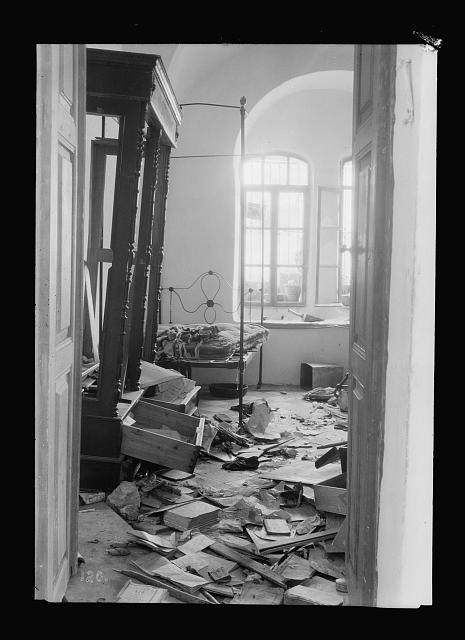
The British indulged the Arabs and responded by limiting Jewish immigration and land purchases.
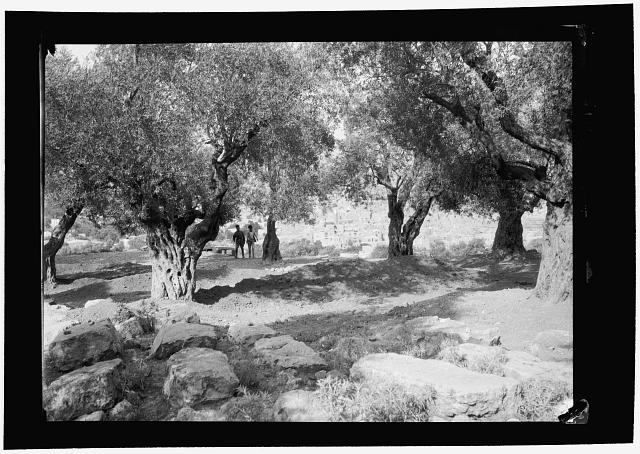
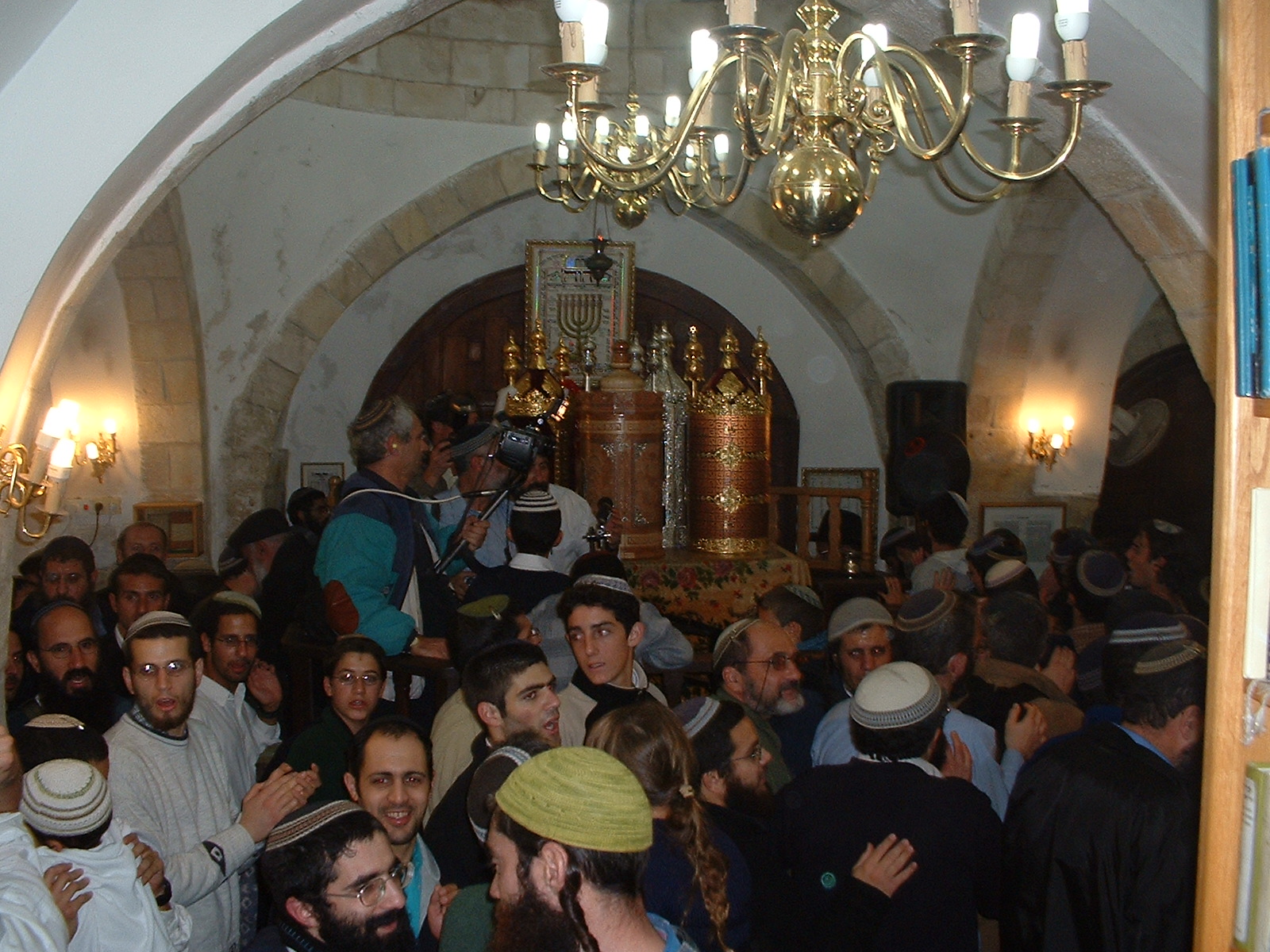
According to the Library of Congress, "there are no known restrictions on publication" of their photographs.
This article is archived at the August 22, 2012 edition of Israel Daily Picture
http://www.israeldailypicture.com/2012/08/the-hebron-massacre-august-24-1929-re.html
IsraelDailyPicture.com is a wonderful site. Click here to see other photos from other times.
Hebron's Cave of the Patriarchs Will Be Packed This Weekend.
In synagogues around the world this Sabbath, congregations will read the Torah portion describing Sarah's death and burial. Abraham purchased theMearat HaMachpela [literally the "double cave" -- so named either because it had two chambers or it would eventually contain pairs of husbands and their wives].
Genesis 23: And these were the days of Sarah, 127 years. Sarah died in Kiryat-Arba which is Hebron....Abraham spoke to the Sons of Heth: grant me legal possession of land for a burial site... for its price in full ... 400 shekels of silver.... Thus it was established, the field and the cave that was in it, for Abraham as legally possessed for a burial site from the Sons of Heth."
In Israel, thousands of Jews will converge on Hebron and pray in the Cave of the Patriarchs and Matriarchs during the Sabbath.
The massive building surrounding the gravesite was built by King Herod two thousand years ago. The actual graves are located in subterranean caverns beneath. Their locations are marked above ground by cenotaphs -- empty tombs that serve as monuments.
In the 11th and 12th century Jewish travelers documented visiting the caves. One of them, Binyamin of Tudela, described "two empty caves, and in the third ... six tombs, on which the names of the three Patriarchs and their wives are inscribed in Hebrew characters. The cave is filled with barrels containing bones of people, which are taken there as to a sacred place."
When Israel captured the area in 1967 Jews were allowed to visit the Cave of the Patriarchs, but Israel allowed the Islamic Waqf authorities to maintain control of large portions of the site.
Many Jewish families in Israel celebrate weddings, bar mitzvas and circumcisions at the shrine.
This article is archived at the August 22, 2012 edition of Israel Daily Picture
http://www.israeldailypicture.com/2012/08/the-hebron-massacre-august-24-1929-re.html
IsraelDailyPicture.com is a wonderful site. Click here to see other photos from other times.
Arab riots in Jerusalem 1929
Hebron's Cave of the Patriarchs Will Be Packed This Weekend.
Photographs from the Cave 100 Years Ago
 |
| Cave of the Patriarchs, Hebron (circa 1900) |
Genesis 23: And these were the days of Sarah, 127 years. Sarah died in Kiryat-Arba which is Hebron....Abraham spoke to the Sons of Heth: grant me legal possession of land for a burial site... for its price in full ... 400 shekels of silver.... Thus it was established, the field and the cave that was in it, for Abraham as legally possessed for a burial site from the Sons of Heth."
 |
| "Inner entrance to Machpelah showing mammoth stones in Herodian wall" |
The massive building surrounding the gravesite was built by King Herod two thousand years ago. The actual graves are located in subterranean caverns beneath. Their locations are marked above ground by cenotaphs -- empty tombs that serve as monuments.
 |
| Cenotaph above the Tomb of Sarah (circa 1900) |
 |
| Tomb of Abraham |
The great Jewish scholar Maimonides visited the tombs in 1116 and declared it a personal holy day.
From the 14th century, however, Jews were not permitted to pray at the shrine. The Mamluks (an Islamic army of slave soldiers) forbade Jews from visiting the site other than standing on stairs outside. The practice continued until 1948 when all Jews were banned from the Jordanian-occupied West Bank.
 |
| "Cenotaph of Isaac showing distinctive features of Crusader Church" |
 |
| Hebron today, where school boys recently celebrated completion of the book of Genesis |
Many Jewish families in Israel celebrate weddings, bar mitzvas and circumcisions at the shrine.




No comments:
Post a Comment